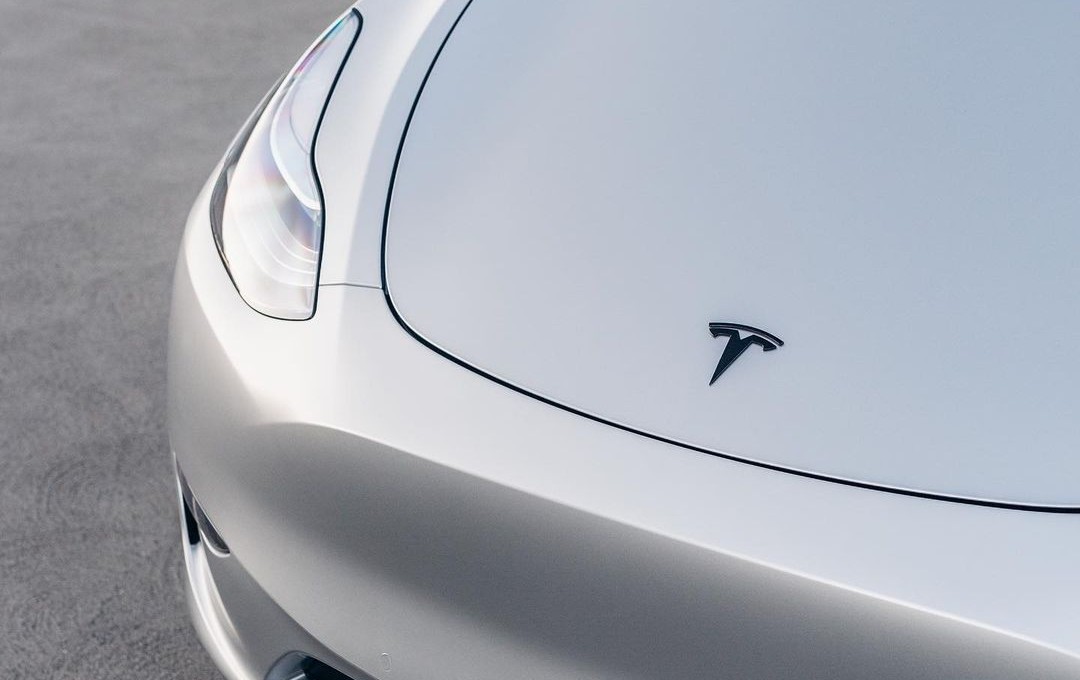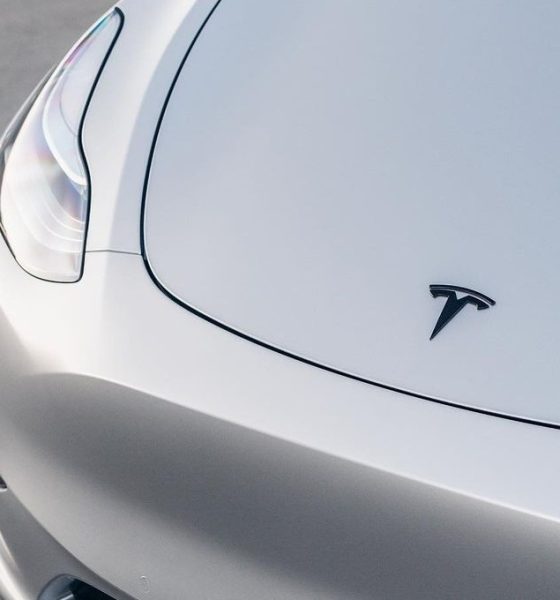Tesla is receiving support from Indian Union Road Transport Minister Nitin Gadkari, who stated that the automaker should have a reduced import duty rate to test demand for its vehicles.
Following news that the company started lining up supplier deals that will give the company the ability to manufacture and sell its cars in India for the first time in the automaker’s eighteen-year history, Tesla is moving closer to having the authorization to import cars into the country. Tesla is reportedly already in talks with several companies that would supply various car parts In India domestically. Tesla is looking to lock up electrical and mechanical components and various car parts, such as windshields, differential brakes, gears, power seats, and instrument panels.
Indian media outlet Economic Times listed Sona Comstar Ltd., Sandhar Technologies Ltd., and Bharat Forge Ltd. as suppliers already in talks with Tesla to sell automotive parts.
Now, Tesla is receiving support from Nitin Gadkari. Gadkari is pushing for reduced import duties so that Tesla can test the demand for its vehicles, an idea the company proposed within the last few months.
“If they have to manufacture here, they need the numbers, and no one can test the market when you impose such high import duty on the vehicles,” Gadkari said to India’s Economic Times.
The company has yet to make an official statement regarding its potential as a domestic automaker in India, but CEO Elon Musk has suggested the possibility for several years. Most recently, Musk hinted that Tesla would be willing to establish a permanent base in India if it could test demand through imports. Indian government officials were not keen on the idea as they favored local manufacturers for economic reasons. However, talks are beginning to move forward, and Tesla looks to be just months away from testing its sales power if all goes according to plan.
Initially, Tesla lobbied to have Indian officials lower import taxes, which apply to every vehicle not produced in the country. Cars below $40,000 are subject to a 40% tax, while any vehicle more expensive than that has a 100% tax applied to it. This makes a significant number of vehicles widely unaffordable for citizens.
Musk, who was unwilling to commit to building a Gigafactory in India until sales figures proved that demand was sustainable, said the only way Tesla would build a manufacturing site in the country was to test sales through imports. Politicians rebutted with the argument that it could not provide “company-specific” incentives to avoid import taxes, although Tesla lobbied for all EV makers to qualify for the reductions. Indian government officials then stated that the only way Tesla could have reduced imports was if it committed to building a Gigafactory in the region, which ultimately put the situation at a brief standstill.
Government officials then backtracked just a week later, considering the advantages that could come from allowing imports with reduced duties for EVs only. Other automakers, like Volkswagen, supported the idea, but no official statement has been issued by any Indian official or by Tesla regarding the progress of the negotiations.
Tesla India: Gov’t officials ponder sizable import duty reductions for EVs
With suppliers evidently in talks with Tesla, along with several vehicles being spotted testing in the country and now support from Transport Minister Gadkari, the automaker may be just months away from importing vehicles for sales.
What do you think? Let us know in the comments below, or be sure to email me at joey@teslarati.com or on Twitter @KlenderJoey.

News
Tesla FSD fleet is nearing 7 billion total miles, including 2.5 billion city miles
As can be seen on Tesla’s official FSD webpage, vehicles equipped with the system have now navigated over 6.99 billion miles.

Tesla’s Full Self-Driving (Supervised) fleet is closing in on almost 7 billion total miles driven, as per data posted by the company on its official FSD webpage.
These figures hint at the massive scale of data fueling Tesla’s rapid FSD improvements, which have been quite notable as of late.
FSD mileage milestones
As can be seen on Tesla’s official FSD webpage, vehicles equipped with the system have now navigated over 6.99 billion miles. Tesla owner and avid FSD tester Whole Mars Catalog also shared a screenshot indicating that from the nearly 7 billion miles traveled by the FSD fleet, more than 2.5 billion miles were driven inside cities.
City miles are particularly valuable for complex urban scenarios like unprotected turns, pedestrian interactions, and traffic lights. This is also the difference-maker for FSD, as only complex solutions, such as Waymo’s self-driving taxis, operate similarly on inner-city streets. And even then, incidents such as the San Francisco blackouts have proven challenging for sensor-rich vehicles like Waymos.
Tesla’s data edge
Tesla has a number of advantages in the autonomous vehicle sector, one of which is the size of its fleet and the number of vehicles training FSD on real-world roads. Tesla’s nearly 7 billion FSD miles then allow the company to roll out updates that make its vehicles behave like they are being driven by experienced drivers, even if they are operating on their own.
So notable are Tesla’s improvements to FSD that NVIDIA Director of Robotics Jim Fan, after experiencing FSD v14, noted that the system is the first AI that passes what he described as a “Physical Turing Test.”
“Despite knowing exactly how robot learning works, I still find it magical watching the steering wheel turn by itself. First it feels surreal, next it becomes routine. Then, like the smartphone, taking it away actively hurts. This is how humanity gets rewired and glued to god-like technologies,” Fan wrote in a post on X.
News
Tesla starts showing how FSD will change lives in Europe
Local officials tested the system on narrow country roads and were impressed by FSD’s smooth, human-like driving, with some calling the service a game-changer for everyday life in areas that are far from urban centers.

Tesla has launched Europe’s first public shuttle service using Full Self-Driving (Supervised) in the rural Eifelkreis Bitburg-Prüm region of Germany, demonstrating how the technology can restore independence and mobility for people who struggle with limited transport options.
Local officials tested the system on narrow country roads and were impressed by FSD’s smooth, human-like driving, with some calling the service a game-changer for everyday life in areas that are far from urban centers.
Officials see real impact on rural residents
Arzfeld Mayor Johannes Kuhl and District Administrator Andreas Kruppert personally tested the Tesla shuttle service. This allowed them to see just how well FSD navigated winding lanes and rural roads confidently. Kruppert said, “Autonomous driving sounds like science fiction to many, but we simply see here that it works totally well in rural regions too.” Kuhl, for his part, also noted that FSD “feels like a very experienced driver.”
The pilot complements the area’s “Citizen Bus” program, which provides on-demand rides for elderly residents who can no longer drive themselves. Tesla Europe shared a video of a demonstration of the service, highlighting how FSD gives people their freedom back, even in places where public transport is not as prevalent.
What the Ministry for Economic Affairs and Transport says
Rhineland-Palatinate’s Minister Daniela Schmitt supported the project, praising the collaboration that made this “first of its kind in Europe” possible. As per the ministry, the rural rollout for the service shows FSD’s potential beyond major cities, and it delivers tangible benefits like grocery runs, doctor visits, and social connections for isolated residents.
“Reliable and flexible mobility is especially vital in rural areas. With the launch of a shuttle service using self-driving vehicles (FSD supervised) by Tesla in the Eifelkreis Bitburg-Prüm, an innovative pilot project is now getting underway that complements local community bus services. It is the first project of its kind in Europe.
“The result is a real gain for rural mobility: greater accessibility, more flexibility and tangible benefits for everyday life. A strong signal for innovation, cooperation and future-oriented mobility beyond urban centers,” the ministry wrote in a LinkedIn post.
News
Tesla China quietly posts Robotaxi-related job listing
Tesla China is currently seeking a Low Voltage Electrical Engineer to work on circuit board design for the company’s autonomous vehicles.

Tesla has posted a new job listing in Shanghai explicitly tied to its Robotaxi program, fueling speculation that the company is preparing to launch its dedicated autonomous ride-hailing service in China.
As noted in the listing, Tesla China is currently seeking a Low Voltage Electrical Engineer to work on circuit board design for the company’s autonomous vehicles.
Robotaxi-specific role
The listing, which was shared on social media platform X by industry watcher @tslaming, suggested that Tesla China is looking to fill the role urgently. The job listing itself specifically mentions that the person hired for the role will be working on the Low Voltage Hardware team, which would design the circuit boards that would serve as the nervous system of the Robotaxi.
Key tasks for the role, as indicated in the job listing, include collaboration with PCB layout, firmware, mechanical, program management, and validation teams, among other responsibilities. The role is based in Shanghai.
China Robotaxi launch
China represents a massive potential market for robotaxis, with its dense urban centers and supportive policies in select cities. Tesla has limited permission to roll out FSD in the country, though despite this, its vehicles have been hailed as among the best in the market when it comes to autonomous features. So far, at least, it appears that China supports Tesla’s FSD and Robotaxi rollout.
This was hinted at in November, when Tesla brought the Cybercab to the 8th China International Import Expo (CIIE) in Shanghai, marking the first time that the autonomous two-seater was brought to the Asia-Pacific region. The vehicle, despite not having a release date in China, received a significant amount of interest among the event’s attendees.










